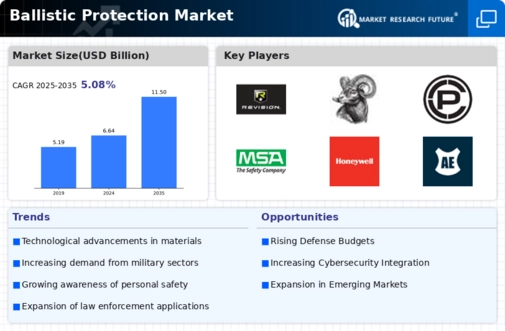Ballistic Protection Market Summary
As per Market Research Future Analysis, the Global Ballistic Protection Market was valued at 6.02 USD Billion in 2022 and is projected to grow to 9.89 USD Billion by 2032, reflecting a CAGR of 5.08% from 2024 to 2032. The market is driven by increasing security concerns, rising terrorism threats, and advancements in armor materials. Key segments include Body Armor, Helmets, and Protective Clothing, with Body Armor expected to grow from 2.0 USD Billion in 2023 to 3.2 USD Billion by 2032. North America leads the market, valued at 2.55 USD Billion in 2023, driven by military expenditure and personal protection demand.
Key Market Trends & Highlights
The Ballistic Protection Market is witnessing significant trends driven by technological advancements and evolving security needs.
- Body Armor segment projected to grow from 2.0 USD Billion in 2023 to 3.2 USD Billion by 2032.
- North America market expected to reach 4.05 USD Billion by 2032, driven by increased military spending.
- Technological advancements in materials like Kevlar and UHMWPE are enhancing product performance and comfort.
- Growing demand for customized protective solutions tailored to specific security needs.
Market Size & Forecast
| 2022 Market Size | USD 6.02 Billion |
| 2023 Market Size | USD 6.33 Billion |
| 2032 Market Size | USD 9.89 Billion |
| CAGR (2024-2032) | 5.08% |
Major Players
Key players include Revision Military, Vista Outdoor, Crye Precision, MSA Safety, and Honeywell.





















Leave a Comment